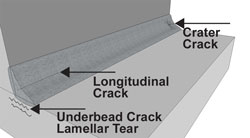Content

Debits increase the value of asset, expense and loss accounts. Credits increase the value of liability, equity, revenue and gain accounts. With an expense account, you can easily compare your outgoing and incoming money. And by separating your expenses into different accounts, you can determine where all of your money is going. An expense account is also critical for staying organized and helping you budget. When you separate your business’s expenses, you get a better idea of which expenses are constant and which are intermittent. That way, you can predict future expenses when creating your budget.
- Branded Gift Cards Boost your brand’s visibility to drive sales higher than they’ve ever been before with gift cards uniquely designed for your business.
- Sub-accounts show you exactly where funds are coming in and out of.
- Although the accounting system you choose will be unique to your business and its industry, business owners are likely to encounter some common situations.
- In the below example of a journal entry, a business owner paid their employee’s salary.
I’ll also calculate accrued sick and vacation time based on all of our employees’ current balances and their pay rates. A “T chart”, also referred to as a “T-account”, is a two-column chart that shows activity within a general-ledger account. The chart resembles the shape of the letter “t”, where the left column displays debits and the right column displays credits. The name of the account — such as cash, inventory or accounts payable — appears at the top of the chart. But, how much do you know about the accounts they affect? A liability is a a legally binding obligation payable to another entity.
Difference Between Accrued Expenses and Accounts Payable
Unlike assets and liabilities, expenses are related to revenue, and both are listed on a company’s income statement. The equation to calculate net income is revenues minus expenses. There are two main differences between expenses and liabilities. First, expenses are shown on https://business-accounting.net/ the income statement while liabilities are shown on the balance sheet. Second, expenses and liabilities diverge when it comes to payment and accrual of each. Is the Supplies account classified as an asset, a liability, an owner’s equity, a revenue, or an expense account?

Buildings and floor space aren’t the only thing rented, however. Equipment and vehicles are also commonly rented by businesses. All accounting statements can be traced back to individual transactions, and every transaction In Accounting, What Is the Difference Between a Liability Account and an Expense Account? has to balance. Liabilities are other people’s claims on your assets, and equity in accounting is your claims on your assets. Not keeping track of your balance sheet is one of the quickest ways to doom your business.
Revenue
An expense is a cost that has expired or been taken up by activities that help generate revenue. Therefore, all expenses are costs, but not all costs are expenses. Accrued liabilities are expenses that have yet to be paid for by a company. They are recorded to better represent the financial position of the company regardless if a cash transaction has occurred.
VIKING THERAPEUTICS, INC. Management’s Discussion and Analysis of Financial Condition and Results of Operations. (form 10-K) – Marketscreener.com
VIKING THERAPEUTICS, INC. Management’s Discussion and Analysis of Financial Condition and Results of Operations. (form 10-K).
Posted: Fri, 10 Feb 2023 11:03:09 GMT [source]
